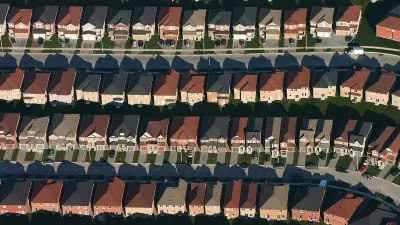A few months ago, I was talking to a faculty colleague who lives in a part of Jacksonville even more sprawl-bound where I live, an area about a mile or so from the nearest bus stop and with a single-digit Walkscore. He said Jacksonville was "safe and clean." I was a little surprised: "clean" is one word I would never* use to describe Jacksonville. When I walk down the sidewalks of San Jose Boulevard, I notice litter aplenty - and from what I know of Beach Boulevard (the grim commercial strip near my colleague's house) I doubt that it is much better.
A few months ago, I was talking to a faculty colleague who lives in a part of Jacksonville even more sprawl-bound where I live, an area about a mile or so from the nearest bus stop and with a single-digit Walkscore. He said Jacksonville was "safe and clean." I was a little surprised: "clean" is one word I would never* use to describe Jacksonville. When I walk down the sidewalks of San Jose Boulevard, I notice litter aplenty - and from what I know of Beach Boulevard (the grim commercial strip near my colleague's house) I doubt that it is much better.
So why do my coworkerand I view the city so differently? My suspicion is that how we get around makes a difference. Even though I drive to work about half the time, I still walk enough that I have a sense of what my neighborhood looks like on foot. And when you walk at 2 mph on foot, you notice little soda cans and cigarettes dumped here and there. My contrast, my colleague drives to work every day, and probably has little reason if any to walk to Beach Boulevard. And when you drive through a super-wide commercial street at 40 mph, you aren't going to be able to notice litter (let alone urban hassles which have spread to suburbia, such as the occasional panhandler).
On balance I would rather live where I live than where my colleague does. But my colleague does get to view his city through rose-colored glasses.**
*What about "safe"? I would say that Jacksonville is about average, maybe a little worse, for comparably sized American cities- not tremendously dangerous, but more so than I would expect for a laid-back Southern city.
**At least if he doesn't watch television, much of which is designed to terrify people into believing that their city, state and nation are one gigantic crime wave!

Alabama: Trump Terminates Settlements for Black Communities Harmed By Raw Sewage
Trump deemed the landmark civil rights agreement “illegal DEI and environmental justice policy.”

Planetizen Federal Action Tracker
A weekly monitor of how Trump’s orders and actions are impacting planners and planning in America.

The 120 Year Old Tiny Home Villages That Sheltered San Francisco’s Earthquake Refugees
More than a century ago, San Francisco mobilized to house thousands of residents displaced by the 1906 earthquake. Could their strategy offer a model for the present?

Opinion: California’s SB 79 Would Improve Housing Affordability and Transit Access
A proposed bill would legalize transit-oriented development statewide.

Record Temperatures Prompt Push for Environmental Justice Bills
Nevada legislators are proposing laws that would mandate heat mitigation measures to protect residents from the impacts of extreme heat.

Downtown Pittsburgh Set to Gain 1,300 New Housing Units
Pittsburgh’s office buildings, many of which date back to the early 20th century, are prime candidates for conversion to housing.
Urban Design for Planners 1: Software Tools
This six-course series explores essential urban design concepts using open source software and equips planners with the tools they need to participate fully in the urban design process.
Planning for Universal Design
Learn the tools for implementing Universal Design in planning regulations.
Clanton & Associates, Inc.
Jessamine County Fiscal Court
Institute for Housing and Urban Development Studies (IHS)
City of Grandview
Harvard GSD Executive Education
Toledo-Lucas County Plan Commissions
Salt Lake City
NYU Wagner Graduate School of Public Service





























